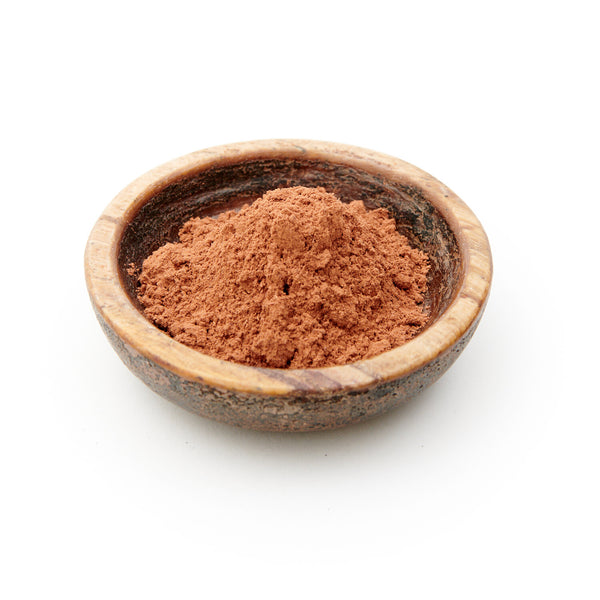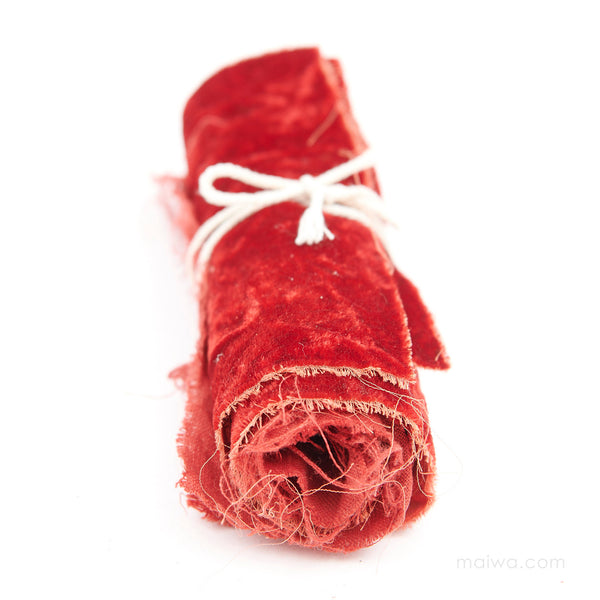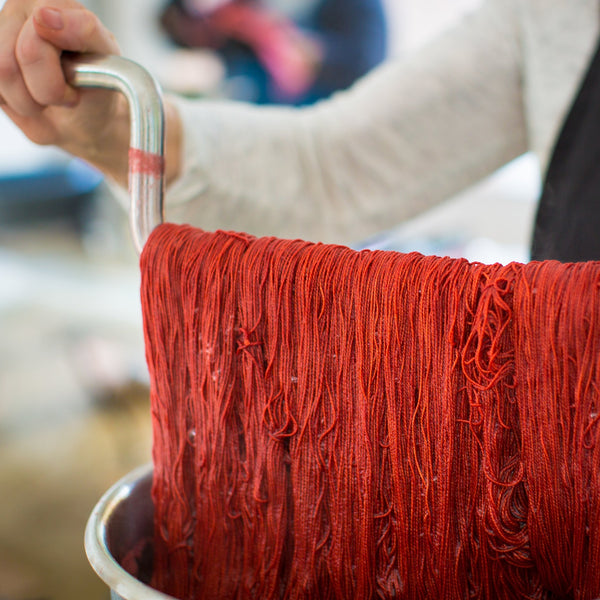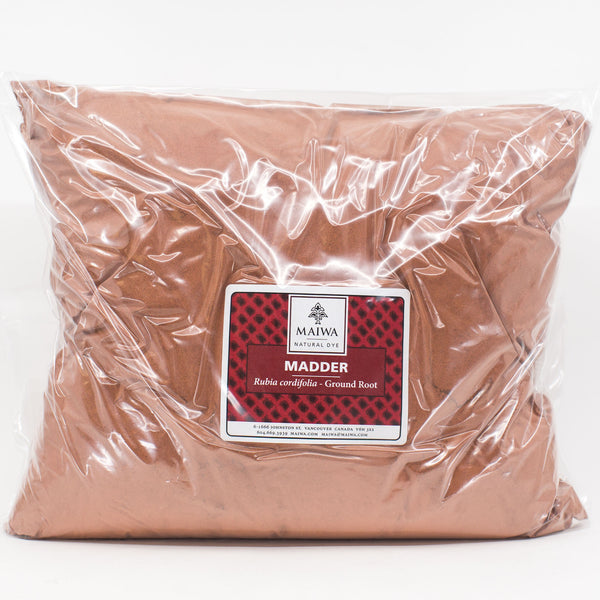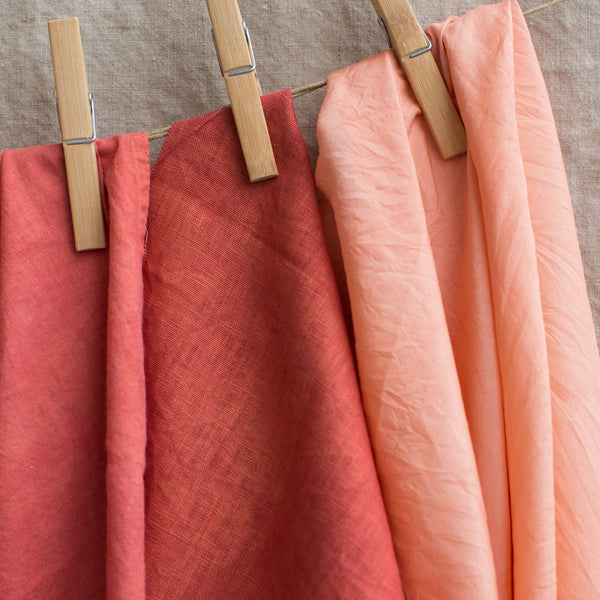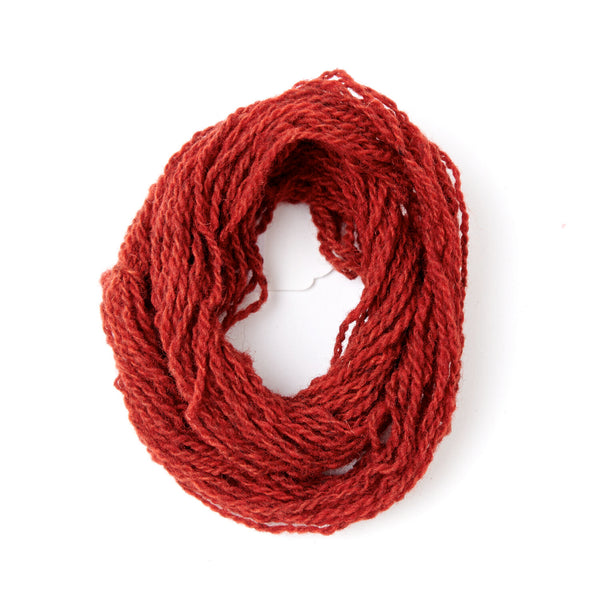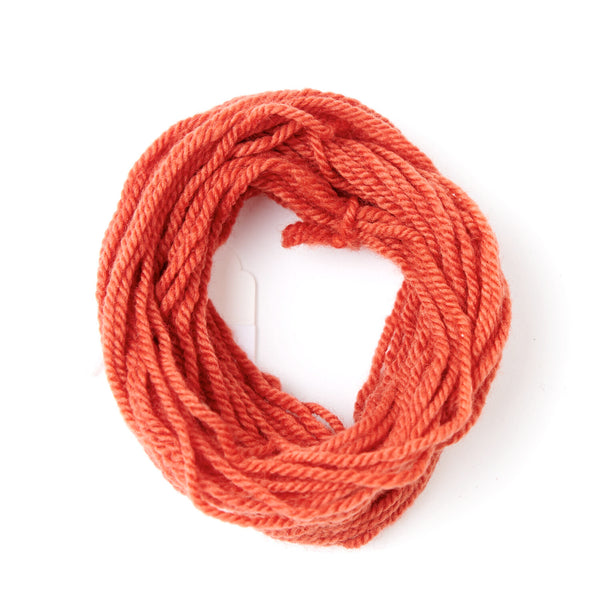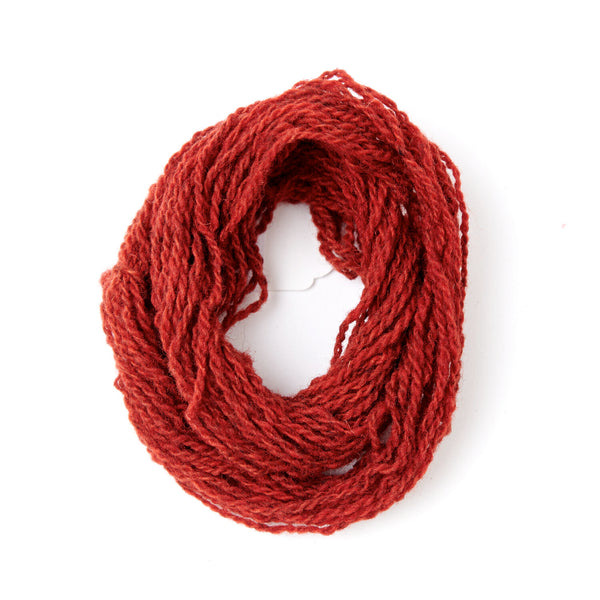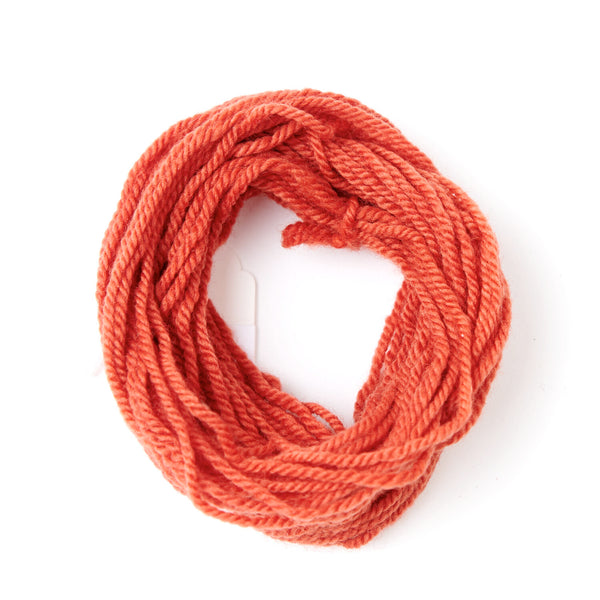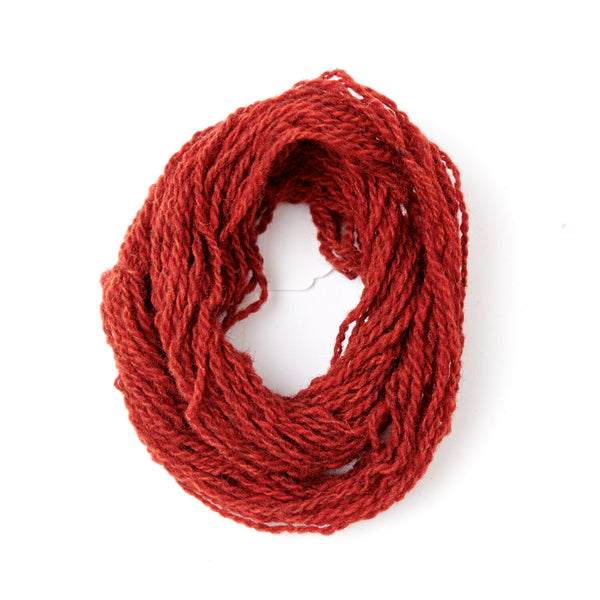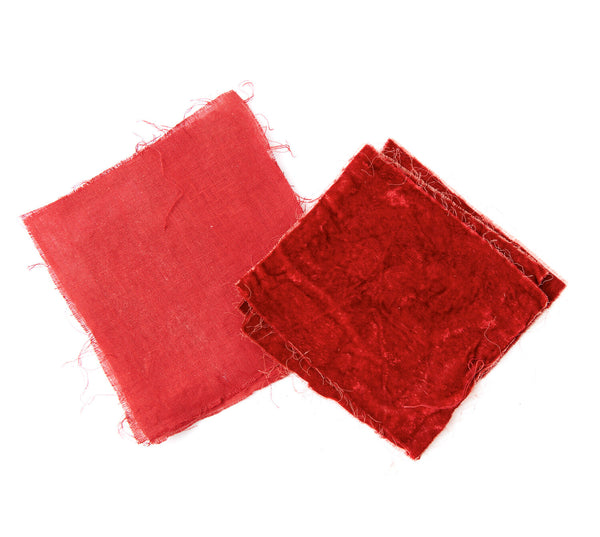Madder
Madder – We carry Rubia cordifolia (Indian madder). We also carry an extract named Madder Rich. Madder is one of the oldest known dyestuffs. It is used to produce turkey reds, mulberry, orange-red, and terracotta. In combination with other dyes madder can give crimson, purple, rust, browns, and near blacks. Madder is cultivated throughout India, south east Asia, Turkey, Europe, south China, parts of Africa, Australia and Japan. Madder is a complex dyestuff containing many colourants. By manipulating mordanting, pH, and temperature a range of shades can be obtained. There are many historic recipes including one from Turkey which brings out the purpurin from madder resulting in a purple.
Larger sizes of natural dyes are priced at wholesale rates. Our rates reflect a growing discount as the size increases.

